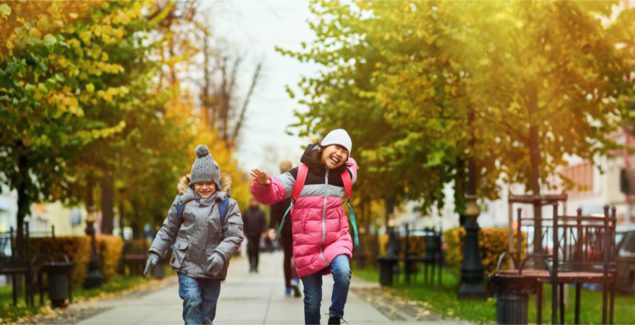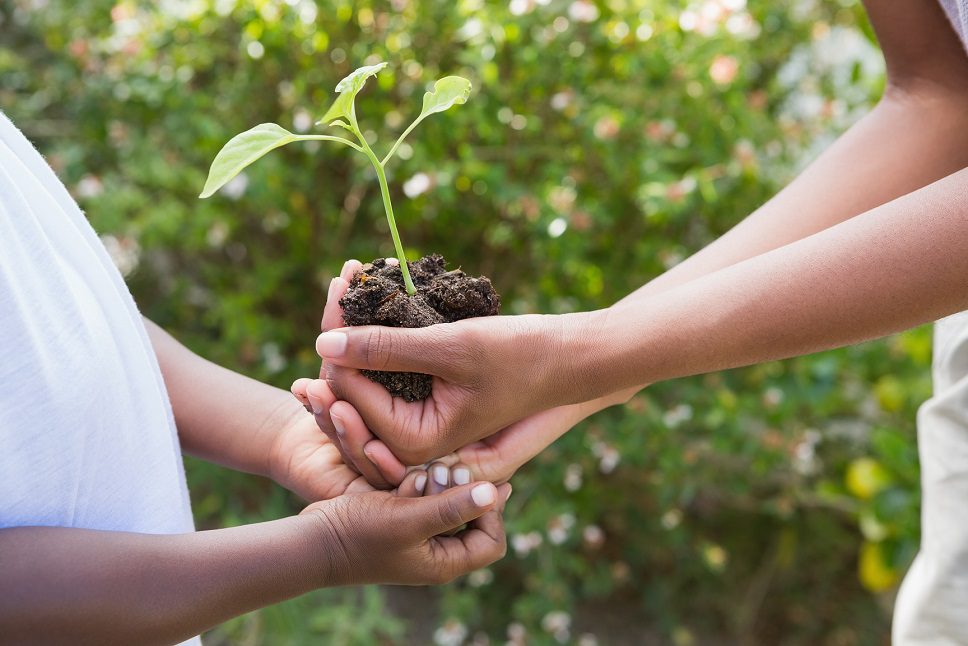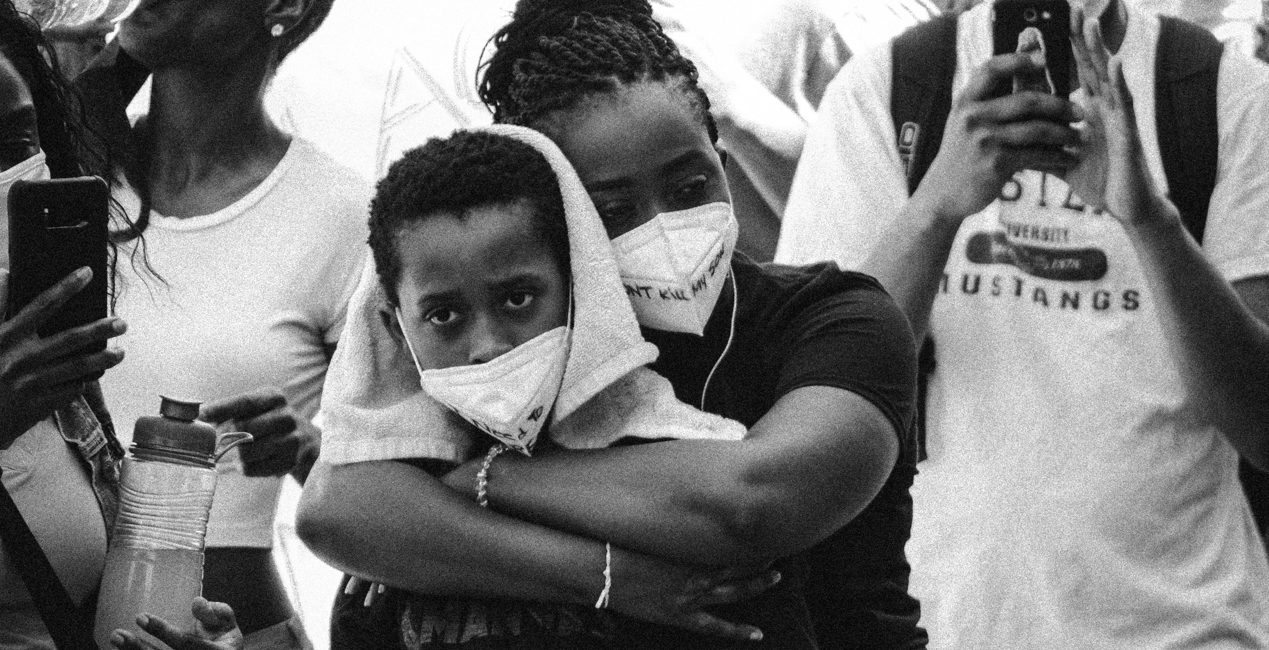Happiness Comes in Green: The Mental Health Magic of Nature for Our Children

Posted in: Hot Topics
Topics: Healthy Living
* * * Why Every Child Deserves to Spend Time in Nature * * *
This past summer, after months of staring at my own reflection on Zoom, I was lucky enough to accompany 35 kids and teens to Revere Beach as part of my work at the MGH Revere Youth Zone. Standing in the warm sunlight, I watched the campers explore the beach’s natural treasures. They excavated crab shells from the sand and bravely touched the sheets of seaweed strewn about the beach like the ocean’s dirty laundry. One camper even dove under the waves for hermit crabs, which scuttled across our hands and gazed up at us with cartoonishly beady eyes.
There was one strand connecting all these adventures: a special kind of joy. For some campers, the joy came from running down a wide-open stretch of sunny sand. For others, the critters ignited their curiosity, and they lost track of time caught up in observation. Simply put, for almost every young person in our group, being in nature seemed to be a very good thing.
At the very least, I can speak to how nature grounds me. From the slow marathon by which the continents form, to the comparatively short but glamorous life of that turkey strutting down my street, it’s comforting to play a role in a beautifully interconnected world. A world that cares about me, I’d like to think. I’m sure every camper had their own unique relationship with nature, and on that sunny day, all that mattered was that we were happy to be outside.
Why Is Nature Mental Health Magic?
Not surprisingly, researchers keep finding new links between nature and mental health and well-being. Sometimes their findings almost sound magical:
- One study found that even a moderate amount of shrubs or street trees in one’s community was associated with lower rates of depression and stress.
- For city-dwellers, walking near a body of water or under trees makes us feel better than does taking a less natural walking route.
- “Forest Bathing,” or the practice of intentionally spending time in the woods for health benefits, is an evidence-based practice first made popular in Japan. Researchers have shown how being in forests can lower blood pressure and contribute to a reduction in stress hormones. The protective compounds trees release into the air even improve the count and strength of a specific kind of white blood cell, which targets tumors and viruses in the human body!
- Across dozens of studies, researchers consistently tell us that children and adolescents exposed to nature do better with regard to ADHD, overall mental health, stress, and resilience.
Considering all this research, it seems likely that simple activities like collecting shells or playing with seaweed had real, positive effects on the well-being of the Revere Campers. How cool is that? And better yet, young people don’t need to go to a pristine beach or an untouched forest every day to feel these benefits. Even little pieces of nature – like street trees, or birds near the home, or local rivers – can do so much for a young person’s mental well-being.
What if Kids Don’t Have Access to Healthy Nature?
What happens when oil washes onto a beach instead of seaweed? When chemicals taint the ground in which we grow our food? Or when smokestacks rise from the center of our community? In her book A Terrible Thing to Waste, writer and medical ethicist Harriet Washington reminds us that the relationship between nature and mental health is a two-sided coin. Healthy nature might make happy kids, but a polluted world could be dangerous to a child’s mental and physical health.
A perfect example of this danger is found in Alice in Wonderland of all places. In the 19th century, hat makers used mercury to turn animal fur into felt, but little did they know that mercury poisoning was the cause of the mysterious “Mad Hatter’s Disease” that was plaguing the industry. Symptoms of mercury poisoning included low self-esteem, irritability, and even hallucinations. The Mad Hatter character, who co-hosts Alice’s “Mad Tea-Party,” reminds us that the chemicals we release into the world can affect the mind in unexpected ways.
We know much more about how to avoid mercury poisoning today, but there are many other ways that environmental contamination endangers young people’s physical and mental health. And since the two are intertwined, any change in one can affect the other.
- Lead: In kids, lead exposure can lead to learning difficulties, behavioral issues, and a lower IQ (a flawed but useful indicator). An important example is the Flint water crisis. The lead-contaminated water of Flint, Michigan severely impacted the health of the city’s majority-Black population, and officials’ slow response to the crisis was criticized as negligent and racist. In other places, beyond Flint, kids can accidentally encounter lead from factory emissions or from old paint in unmaintained housing.
- Pesticides: Different pesticides have been linked to many issues, including Alzheimer’s disease, ADHD, and lower IQ. Exposure can come from pesticide residue on food, and the chemicals we use in our lawns. Many farm workers and harvesters are sadly exposed to pesticides every day.
- Pollution: Noise pollution, urban congestion, and a lack of fresh air all make it even less desirable to get out in an age when technology keeps us indoors. Light pollution prevents us from contemplating our place in the universe through the spiritual act of star-gazing. Polluted soils make it less safe to grow our own food.
All these factors make that natural mental health magic harder to attain.
Everyone has a right to a nurturing, healthy environment. There’s pollution just about everywhere, but environmental justice advocates remind us that these problems disproportionately affect Black, Indigenous, and People of Color (BIPOC) and lower socioeconomic status communities. Oil lines like the Dakota Access Pipeline, which runs against the border of the Standing Rock Sioux’s land, can leak into local water supplies. These polluting industries also do cultural damage by tarnishing sacred places and endangering culturally-important species. Other communities of color face their own set of environmental challenges, but in every case, social injustice has a clear negative impact on mental health and a sense of wellbeing.
We can’t talk about the mental health magic of nature without acknowledging that an unhealthy environment is a danger to our children’s happiness. We are called to stand in solidarity against the profound injustices of environmental racism, and to advocate for equitable access to nature in all communities, not just our own. After all, this is our planet, and we all have an obligation to preserve it and a right to the wonderful health benefits of a healthy environment.
How Can We Help Our Kids?
Thinking about these environmental injustices can stir up valid feelings of sadness, anger, and anxiety, but in the young people in our lives who will inherit a world with a worsening climate. Let’s acknowledge these feelings and when we’re ready, and think about how we can take action on behalf of our next generation. Here are a few ideas:
- Start Conversations. You can ask whether your child is worried about climate change and pollution. Do they think about these issues a lot? Do they feel scared or hopeful about the future? If these are issues that your child feels passionate about, first validate their emotions and then ask what they think we can do about it.
- Help Kids Take Action. Activism is great for teenage well-being and mental health. Younger kids can start small by trying to save more energy or water in their daily lives. Older kids and teenagers can join environmental advocacy groups and find volunteer work. They can watch documentaries, create art, and raise awareness on social media. Taking action can be incredibly empowering for young people. They can do good in the world while processing their anxieties and learning life skills.
- Focus on Environmental Justice. We can help kids understand that environmental issues don’t affect all communities the same way. Older kids can begin to think about how their community fits into this picture and what role they can play in combating environmental racism and community economic disparities. This is another chance to invest in young people’s education, empowerment, and leadership.
- Inform Yourself. Your family has rights to protection from environmental harm, and there are many resources available to you. The EPA has a good list of what you can do to protect children from environmental risks. You can also learn about how to wash pesticides off your produce and how your state should be protecting your family from lead poisoning (try searching “Environmental Lead Program [Your State]” on the internet).
- Make Efforts to Spend Time in Natural Settings. When we expose our kids from a very young age to natural settings, through hikes, camping, gardening, and visiting local or national parks, we help them bond with nature and feel the powerful benefits to their mental health and well-being. This sets the stage for children to maintain an ongoing relationship with nature throughout their lives.
Though the issues are complicated and the path to a solution isn’t straightforward, the core message here is simple and so positive: the Earth is always waiting to embrace us. There are no silver bullets when it comes to mental health, but the healing power of nature is too fantastically simple and just plain-old enjoyable to overlook. Find a safe and fun way to go outside with your kids and teens. Get everyone a dose of that mental health magic and you just might find yourself feeling a little bit better too.

 Share
Share Tweet
Tweet





